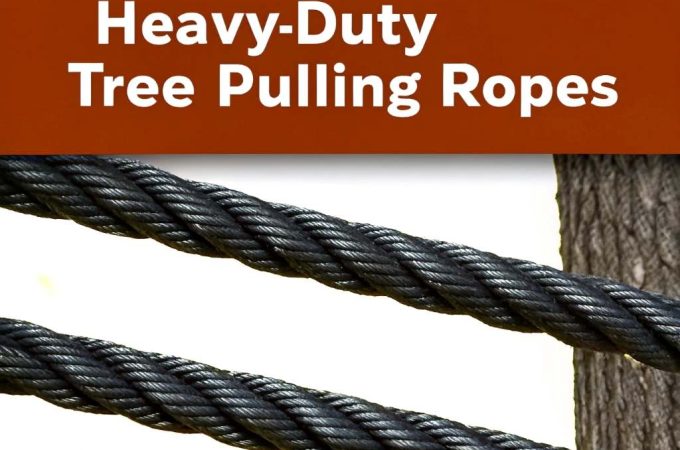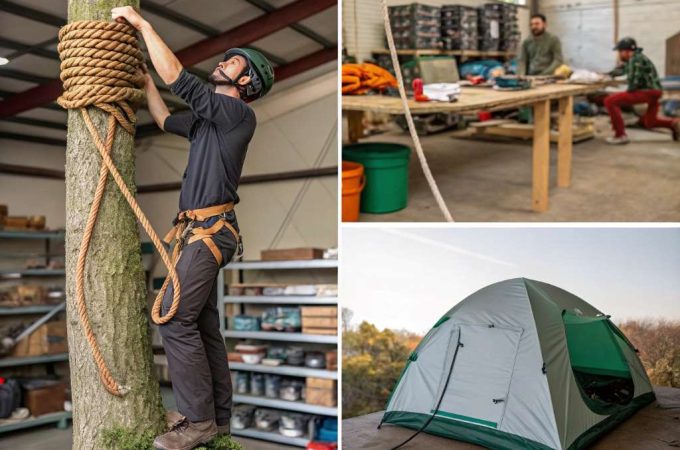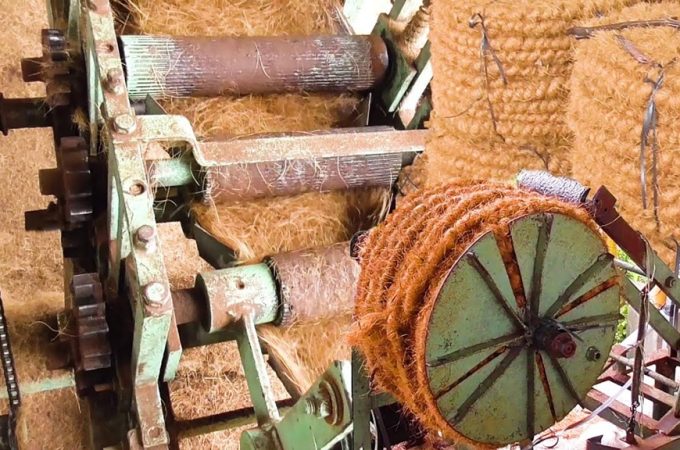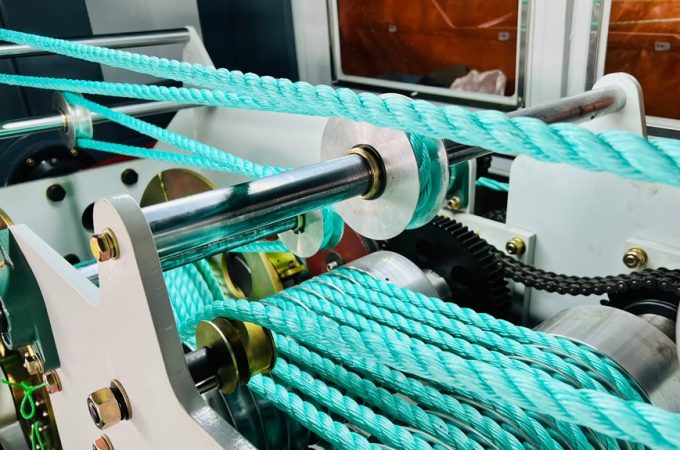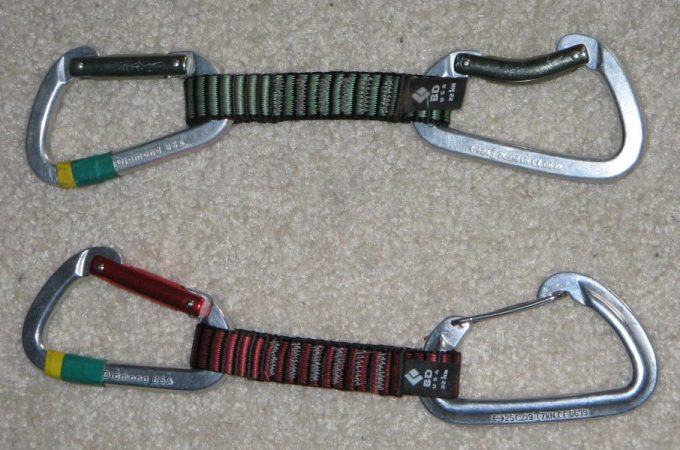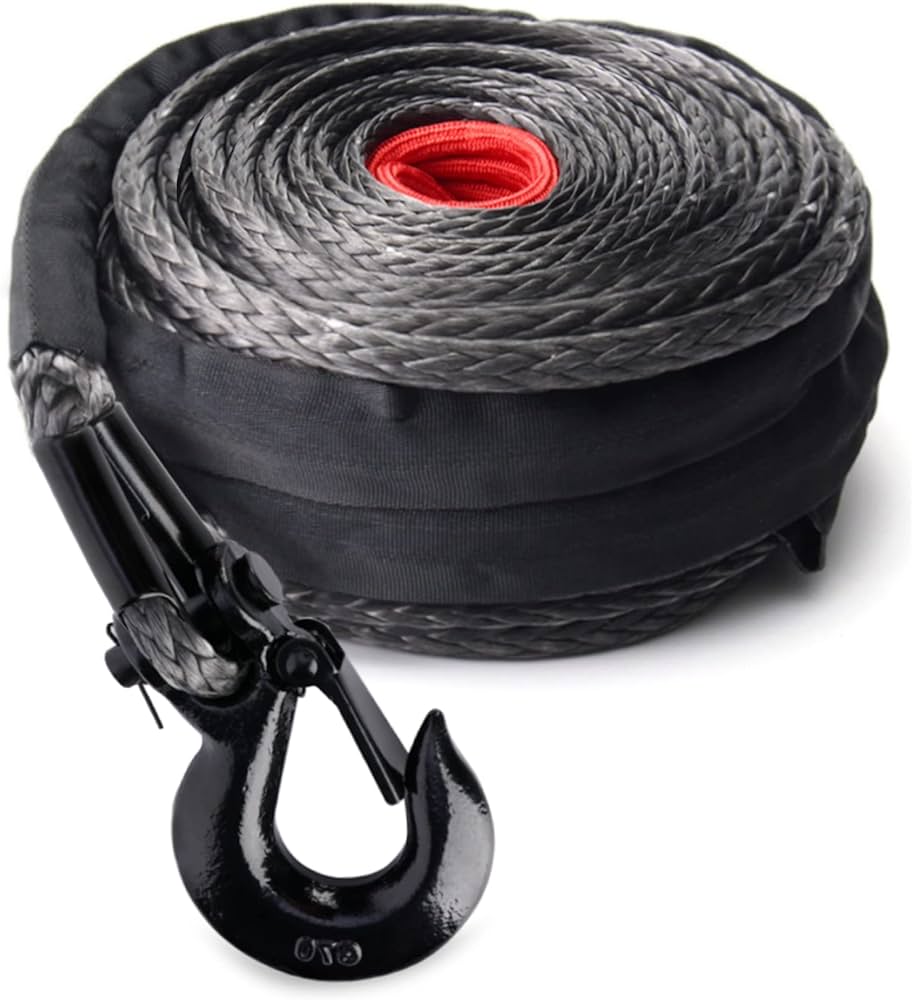
Synthetic Winch Rope: The Ultimate Guide to Power and Performance
Synthetic winch rope is a durable and reliable alternative to steel rope that offers numerous advantages. It is highly popular among off-road enthusiasts and those who frequently use winches for various applications due to its lightweight, high strength, and easy handling.
Contents at a Glance
ToggleSynthetic winch rope is less prone to kinking, snapping, and rusting compared to steel rope, making it a safer choice. It also floats on water, reducing the risk of it sinking and getting tangled. Additionally, synthetic winch rope is more flexible and easier to wind onto the drum, making it faster and more efficient to use.
Despite being slightly more expensive, many consider synthetic winch rope worth the investment, considering its superior performance and safety features.
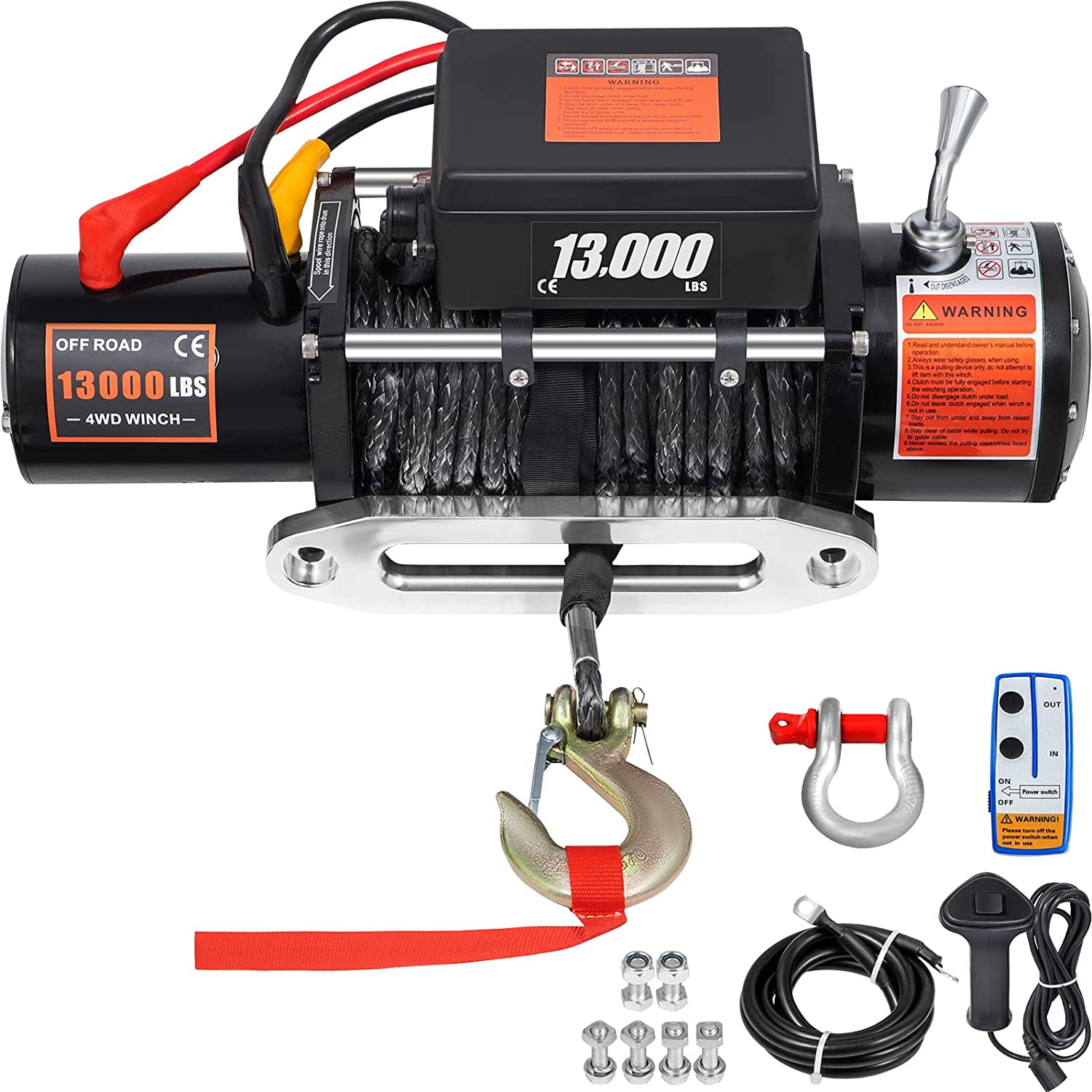
Credit: www.walmart.com
Introduction To Synthetic Winch Rope
Discover the benefits of Synthetic Winch Rope, a durable and lightweight alternative to steel rope. Say goodbye to the hassles of rust and kinks, and enjoy a smoother and safer winching experience. Available in various lengths and strengths, Synthetic Winch Rope is a must-have accessory for any off-roading adventurer.
What Is Synthetic Winch Rope?
Synthetic winch rope is a lightweight and durable alternative to traditional steel winch cable. Made from high-strength fibers such as nylon or Dyneema, synthetic winch rope offers several advantages over its steel counterpart.
Advantages Of Synthetic Winch Rope
Synthetic winch rope has gained popularity among off-roaders and outdoor enthusiasts due to its numerous advantages:
- Lightweight: Synthetic winch rope is significantly lighter than steel cable, making it easier to handle and transport. This reduced weight also puts less strain on your winch and vehicle.
- Strength: Despite its lightweight nature, synthetic winch rope offers exceptional strength. In fact, some synthetic ropes have a higher breaking strength than steel cables of the same diameter.
- Safety: Synthetic winch rope is safer to use than steel cable. Unlike steel, synthetic rope does not store energy, reducing the risk of dangerous snapbacks if it breaks under tension.
- Flexibility: Synthetic winch rope is extremely flexible, allowing it to wrap around objects with ease. This flexibility also reduces the risk of kinks and tangles, ensuring smooth winching operations.
- Floatation: Unlike steel cable, synthetic winch rope is buoyant, making it ideal for water recoveries. If you find yourself in a muddy or watery situation, synthetic rope will not sink and can be easily retrieved.
- Easy to Repair: In the event that your synthetic winch rope becomes damaged, it’s relatively easy to repair. Unlike steel cable, which often requires replacement if it breaks or frays, synthetic rope can be spliced back together.
Disadvantages Of Synthetic Winch Rope
While synthetic winch rope has many advantages, it’s essential to consider the following disadvantages:
- Abrasion: Synthetic winch rope is more susceptible to abrasion than steel cable. It can wear out faster if frequently rubbed against rough surfaces or sharp edges. Using a protective sleeve or abrasion-resistant coating can help mitigate this issue.
- UV Degradation: Prolonged exposure to sunlight can cause synthetic winch rope to degrade over time. It’s important to protect the rope from UV rays by storing it in a bag or cover when not in use.
- Cost: Synthetic winch rope is generally more expensive than steel cable. However, the cost difference is often justified by its superior performance and safety features.
- Heat Sensitivity: Synthetic winch rope can be sensitive to heat generated during winching operations. Excessive heat can weaken the rope or cause it to melt. Using a heat-resistant sleeve or taking breaks during intense winching can help mitigate this issue.
- Installation: Installing synthetic winch rope requires specific techniques and tools. It’s crucial to follow manufacturer instructions or seek professional assistance to ensure proper installation and prevent accidents.
In conclusion, synthetic winch rope offers numerous advantages over steel cable, including lightweight, strength, safety, flexibility, floatation, and ease of repair. However, it’s essential to consider the potential disadvantages of abrasion, UV degradation, cost, heat sensitivity, and installation requirements. By understanding the characteristics of synthetic winch rope, you can make an informed decision before upgrading your winching equipment.
Choosing Between Synthetic Rope And Steel Cable
When it comes to winching, one important decision is choosing between synthetic rope and steel cable. Synthetic rope and steel cable both have their own unique characteristics and offer different benefits. Understanding the differences and weighing the pros and cons of each option can help you make an informed decision. Let’s explore the key differences as well as the advantages and disadvantages of using synthetic winch rope and steel cable.
Differences Between Synthetic Rope And Steel Cable
There are several key differences between synthetic rope and steel cable that are important to consider:
- Synthetic Rope is lighter in weight compared to steel cable, making it easier to handle and transport.
- Synthetic Rope is more flexible and pliable, allowing it to wrap easily around winch drums without kinking or causing damage.
- Steel Cable is stronger and has a higher breaking strength compared to synthetic rope, making it ideal for heavy-duty applications.
- Steel Cable is more resistant to abrasion, making it more durable in rough terrain and harsh conditions.
- Synthetic Rope is safer to handle as it does not have the same recoil or snap-back potential as steel cable when it breaks.
Pros Of Using Synthetic Winch Rope
There are several advantages to using synthetic winch rope:
- Synthetic Rope is lightweight and easier to handle, reducing fatigue during use.
- Synthetic Rope does not conduct electricity, making it safer to use in situations where there is a risk of electric shock.
- Synthetic Rope is more flexible and easier to spool, resulting in smoother and more consistent winching.
- Synthetic Rope is resistant to corrosion and UV damage, prolonging its lifespan and reducing maintenance needs.
- Synthetic Rope is easier to repair in the field, allowing for quick and cost-effective fixes.
Cons Of Using Synthetic Winch Rope
Despite its many advantages, synthetic winch rope also has a few drawbacks:
- Synthetic Rope has a lower breaking strength compared to steel cable, making it less suitable for heavy-duty applications.
- Synthetic Rope is more susceptible to abrasion, requiring regular inspection and maintenance to prevent wear and damage.
- Synthetic Rope is more expensive upfront compared to steel cable.
Pros Of Using Steel Cable
There are some benefits to using steel cable as well:
- Steel Cable has a higher breaking strength, making it ideal for heavy-duty winching tasks.
- Steel Cable is more resistant to abrasion, prolonging its lifespan in rough terrains.
- Steel Cable is generally less expensive compared to synthetic rope.
Cons Of Using Steel Cable
Despite its advantages, steel cable also has a few drawbacks:
- Steel Cable is heavier to handle, requiring more effort during use and transportation.
- Steel Cable is more prone to kinking and tangling, which can impact its performance and longevity.
- Steel cables can rust and corrode, requiring regular maintenance and lubrication to prevent damage.
- Steel Cable can recoil and snap back forcefully if it breaks, posing a safety risk to users.
Now that you are aware of the key differences and pros and cons of synthetic winch rope and steel cable, you can make an informed decision based on your specific needs and requirements.
Replacing Winch Rope And Fairlead
Easily replace your winch rope and fairlead with synthetic winch rope for your ATV or UTV. Find the best prices and deals online from top retailers in Austin, Texas.
Steps To Replace Winch Rope With Synthetic Rope
Replacing winch rope with synthetic rope is a relatively simple process that can greatly improve the performance and durability of your winch. Here are the steps to follow:
- Begin by disconnecting the power source to your winch to ensure safety.
- Remove the existing steel winch rope from the drum by unwinding it completely.
- If necessary, detach the fair lead from your winch to access the drum more easily.
- Inspect the drum and clean it thoroughly to remove any dirt or debris.
- Measure the length of the synthetic winch rope needed by wrapping a measuring tape around the drum.
- Cut the synthetic winch rope to the appropriate length using a knife or scissors.
- Attach a suitable hook or thimble to one end of the synthetic rope.
- Begin winding the synthetic winch rope onto the drum, making sure it is evenly distributed.
- Secure the end of the synthetic winch rope to the drum using a locking mechanism or clamp.
- If necessary, reattach the fair lead to your winch.
- Reconnect the power source and test the functionality of your winch with the new synthetic rope.
Installation Process Of Synthetic Winch Rope
The installation process of synthetic winch rope involves a few key steps to ensure proper functionality and safety. Follow these steps:
- Start by gathering all the necessary tools and materials, including the synthetic winch rope, measuring tape, knife, or scissors, and any additional accessories like hooks or thimbles.
- Prepare the winch drum by cleaning it thoroughly to remove any dirt, debris, or remnants of the old rope.
- Measure the length of synthetic winch rope needed to cover the drum, ensuring a snug fit without any excess rope.
- Cut the synthetic winch rope to the measured length using a sharp knife or scissors.
- Attach a suitable hook or thimble to one end of the synthetic rope, ensuring a secure connection.
- Start winding the synthetic winch rope onto the drum, maintaining even tension and avoiding any overlapping or tangling.
- Continue winding until the entire length of the synthetic rope is securely wrapped around the drum.
- Secure the end of the synthetic winch rope to the drum using a reliable locking mechanism or clamp.
- If necessary, reattach the fairlead to your winch, ensuring proper alignment and smooth movement of the rope.
- Reconnect the power source and perform a thorough test to ensure the proper functioning of your winch with the newly installed synthetic rope.
Benefits Of Re-spooling Synthetic Winch Rope
Re-spooling your synthetic winch rope has numerous advantages that can enhance the performance and longevity of your winching operations. Some key benefits include:
- Increased Strength: Synthetic winch ropes are known for their exceptional strength-to-weight ratio, allowing them to handle heavy loads with ease.
- Improved Safety: Synthetic winch ropes are less prone to snapping or recoiling, reducing the risk of accidents and injuries during winching operations.
- Enhanced Durability: Synthetic winch ropes are resistant to UV rays, moisture, and abrasion, ensuring prolonged lifespan and reliability.
- Lightweight and Easy to Handle: Compared to steel winch ropes, synthetic ropes are significantly lighter, making them easier to handle and transport.
- Increased Flexibility: Synthetic winch ropes are more flexible than steel cables, allowing for easier maneuverability and better winching performance.
- Cost-Effective: While synthetic winch ropes may have a higher initial cost, their long-term durability and reduced maintenance requirements make them a cost-effective choice.
By re-spooling your synthetic winch rope regularly, you can ensure optimal performance and maximize the benefits of this advanced winching accessory.

Credit: www.amazon.com

Credit: www.ebay.com
Frequently Asked Questions Of Synthetic Winch Rope
Is Synthetic Winch Rope Worth It?
Yes, synthetic winch rope is worth it. It is flexible, lightweight, and has a high strength-to-weight ratio.
Can I Put Synthetic Rope On Any Winch?
Yes, you can put synthetic rope on any winch. Synthetic rope is compatible with all types of winches and offers numerous benefits such as being lighter, stronger, and safer than traditional steel cable. It is also easier to handle and less prone to kinks and fraying.
What Is The Best Synthetic Winch Rope Material?
Synthetic winch rope is the best material for its high strength and lightweight properties. It is also flexible and easy to handle, making it worth the investment.
Is Synthetic Rope As Strong As Cable?
Yes, synthetic rope is as strong as cable. Synthetic rope is highly flexible, low in weight, and has a high strength-to-weight ratio.
Conclusion
D maneuver than a steel rope. Additionally, synthetic winch rope is resistant to water, UV rays, and abrasions, making it a durable and long-lasting option for your winching needs. With its numerous advantages, synthetic winch rope is definitely worth considering as an upgrade from traditional steel rope.
So, if you’re looking for a reliable and efficient winching solution, don’t overlook the benefits of synthetic winch rope.

